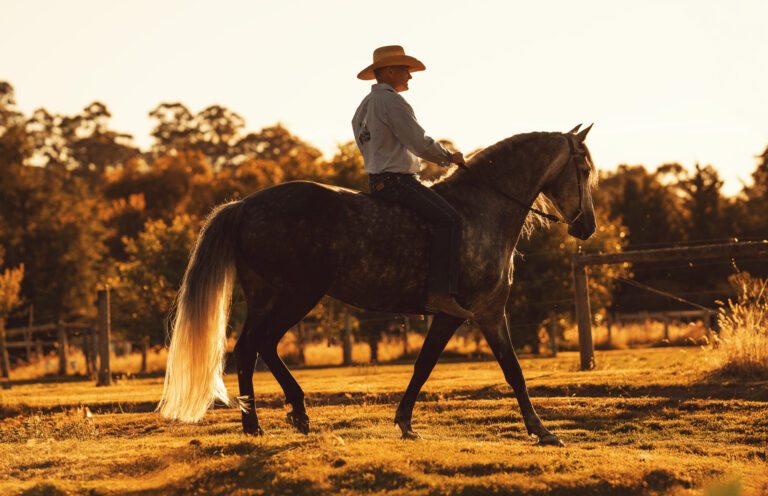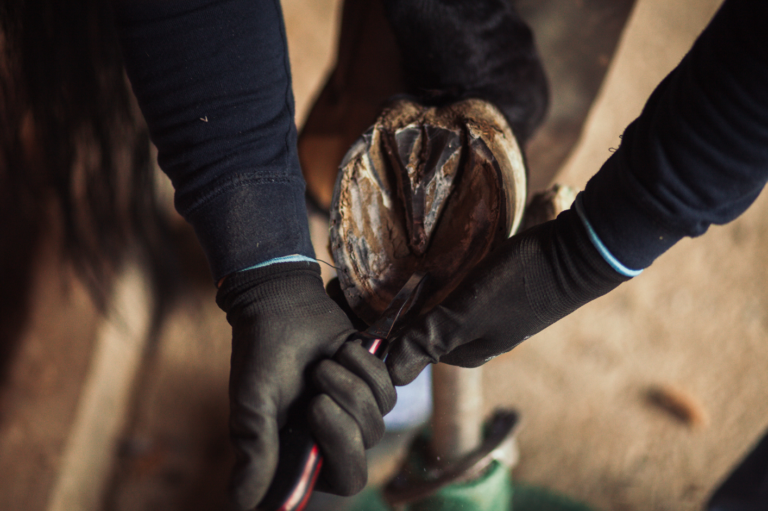This article has appeared previously with Equestrian Life. To see what’s in our latest digital issue, click here.

A mare and foal. Photo supplied.
Most mares foal down with little trouble with you there as the midwife, but there are many reasons why you may need to call a vet and you shouldn’t hesitate if you have concerns.
BY DR MAXINE BRAIN
Q: I HAVE A little Standardbred mare that is due to foal in three weeks and I have never foaled down a mare before. How will I know if or when to call a vet?
A: Most mares foal down with a minimum of difficulty and the incidence of problems is relatively low, about 3 per cent. If a problem occurs during foaling, however, it can be catastrophic and needs to be addressed immediately. It is important to know the difference between what is normal and what is abnormal. There are many books and videos available that I would strongly advise you read and watch so that you have an idea of what to expect.
Mares foal very quickly once they enter second stage of labour and should normally foal within about 20 mintues of their waters breaking or the presentation of a limb. In a normal foaling, the foal’s two front limbs should exit first, followed shortly after by the nose and head. The mare will generally keep pushing the foal out until just the hind legs remain inside. The foal will often sit there for several minutes with its feet inside the mare, still attached by the cord before it tries to move about. The umbilical cord stays attached, allowing more blood flow into the foal before it spontaneously breaks at a predetermined place a few centimetres from the foal’s abdomen. The foal will quickly try and stand, and usually makes multiple attempts before succeed. Once up, the foal is then programmed to look for the udder and start drinking. The foal often will suck everything else except the udder, which can be quite frustrating if you are standing there watching, but they usually find it eventually and away they go.
As a general rule, a foal should stand up within an hour of delivery and be drinking within two hours. It is vital the foal receive the first part of the mare’s milk, called the colostrum, as this contains lots of antibodies that the foal needs to protect itself against infections in the first few weeks of life. Generally the foal can only absorb these antibodies for the first 18-24 hours, so if anything prevents that occurring, it puts the foal at risk of an infection that could be life-threatening.
The mare should pass her afterbirth within a few hours of delivery, but occasionally it is delayed and will remain hanging from the vulval lips. It is important that you don’t pull on this or allow it to be torn as this can lead to serious infections in the mare. Generally if the afterbirth has not been expelled within eight hours you will need to ring the vet to treat the mare.
There are many reasons why you may need to call the vet during or shortly after foaling and it would be impossible for me to list them all, however, I have a shortlist of situations where you should seek assistance and have prioritised them as a guide to help you.
Urgent
• If the nose, head, tail or hind feet are seen protruding from the vulva first, the vet should be called immediately as the mare will require assistance to deliver the foal.
• If a red bag protrudes, it indicates that the placenta has separated from the uterus and not broken open as it should. Normal membranes (amnion) we see covering the foal are white. The foal is at risk of suffocation is the bag is not opened.
• If the mare’s water has broken and/or foetal membranes are through the vulva, and no progress has been made for 20 minutes or so, then you should call a vet. It is important you do not disturb the mare, especially if she is a maiden mare, as mares are often anxious about the impending birth and will not settle until left alone. I know everybody wants to watch, but if the mare does not want to settle it is often valuable to turn off the lights and go away for 10 minutes to allow the mare time to lie down and deliver before the vet is called.
• If the foal is delivered but shows very little signs of life, it will require emergency care. Make sure the airways are clear of membranes and keep the foal warm until the vet arrives.
Image: Ute Raabe.
Semi-Urgent
• If the mare appears colicky after delivery, particularly if she becomes violently colicky, she will need to be seen. Some mares will be a little uncomfortable after delivery because of low-grade uterine contractions, however, the mare should not want to throw herself down on the ground or paw incessantly as this can indicate a major internal abnormality. If the mare is behaving violently colicky, it is important that the foal has protection from the mare in case she throws herself down, potentially squashing her foal. (Care should also be taken by any people trying to assist as they too can be injured if the mare goes down).
• If the mare shows signs of depression, trembling or sweating after delivery it can indicate the mare has haemorrhaged
• If the foal is not up within about two hours of birth it is an indication that a problem exists.
• If the foal has not had a drink within three or four hours of birth then it may need to be tubed with some mare’s milk (colostrum) to help maintain its energy levels and prevent dehydration. If the foal is actively seeking the udder I am generally less concerned than if the foal is depressed and not showing any interest in finding the udder. Depressed foals should be attended to quickly as they often have an underlying illness which requires prompt attention.
Less Urgent
• If the mare has not lost her afterbirth within eight hours then she should be seen by the vet. Normally if the foal is delivered late at night it can wait until the morning to be seen by the vet, however, if the mare delivers through the day and hasn’t expelled her membranes then I may go earlier than the eight hours so the mare can be seen at a reasonable time in the evening. Treatment will vary depending on the vet and can involve either manual removal of the membranes or multiple mare uterine flushes and daily antibiotics.
• If the mare has run milk for days before the foaling it is likely that she has lost her colostrum and the foal will need to be supplemented with either colostrum or plasma to provide the antibodies it needs. As stated above, the foal is able to absorb colostrum (antibodies) for about 18 hours, so if it it can be supplemented with another mare’s colostrum during this period. After the foal is 24 hours old it will require intravenous plasma to boost its antibody levels. The level of antibodies is generally gauged by doing an IgG test on the foal when it is 24 hour s old, or older.
READ THE LATEST NEWS ARTICLES HERE







